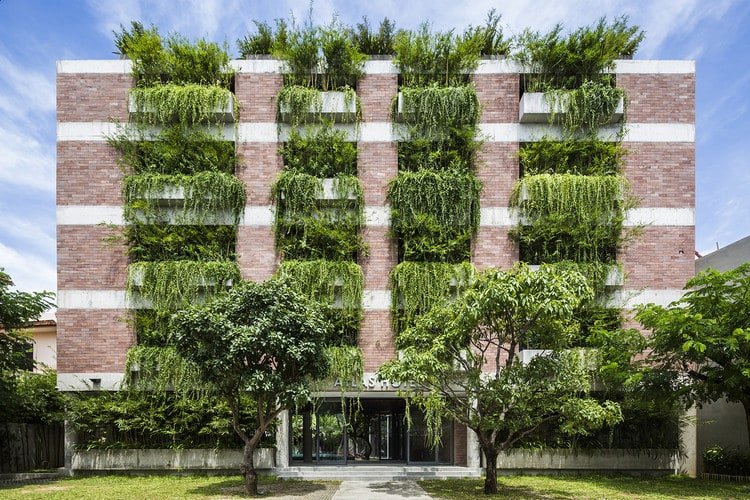No End To The Trend: Shipping Container Hostel Opens in Vietnam
Back in 2012 we wrote about the shipping container-turned-building trend that was sweeping across cities all over the world. We named it ‘container urbanism‘, or ‘cargotecture‘. From student housing in our own backyard here in Amsterdam, to markets from Brooklyn to Bishkek, offices in Japan, food trucks in San Francisco, galleries or hotels – the options seemed endless. But now four years later, there seems to be no slowing down for shipping containers shaping the urban environment. Next chapter – a permanent hostel in Vietnam.
Many of the transformed shipping container examples featured here on Pop-Up City have been examples of temporary structures. The relative low costs and flexibility of using containers has been one of its main selling points and part of its attractiveness for temporary developments. But many projects involving containers have developed from bare-bone, straightforward and still being clearly recognizable as containers, to more complex and elaborate examples, such as this housing project in Ecuador we recently covered.


A recently opened hostel in Vietnam shows how shipping containers have now also become part of permanent structures, making them even more useable than before. In the Vietnamese resort town of Nha Trang, a popular destination for backpackers, three containers have been stacked on top of each other to serve as the sleeping area of the hostel. A separate concrete structure serves as the washing block, while a steel and metal structure serves as shared space with kitchen facilities. The areas are connected by open, bright bridges that are covered with plants and greenery, in contrast to the industrial look of the rest of the building.



The hostel, within walking distance of the beach, has proven to be a popular destination for backpackers and is part of a series of attractive and well designed architecture projects that include shipping containers. Container urbanism: all grown up?



